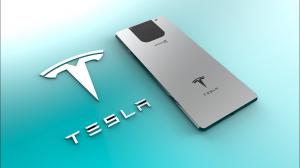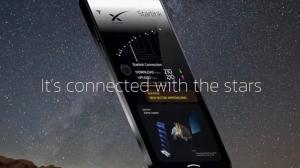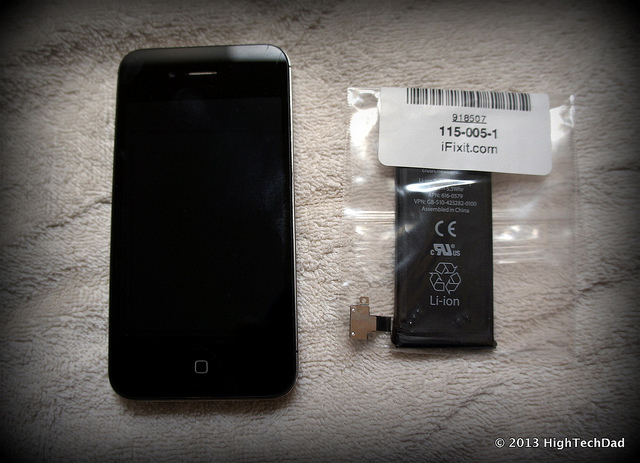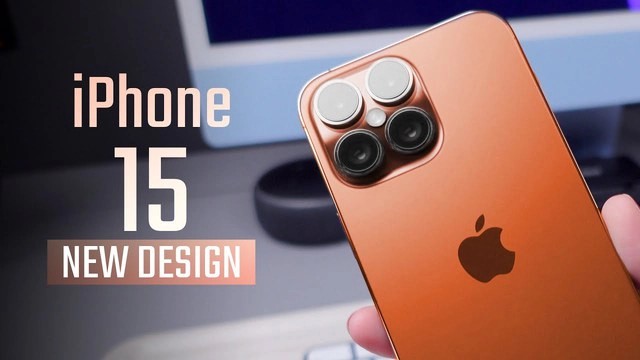Personal fitness trackers can be very personal. While they should be attractive and comfortable, the trackers must fit into your life and what you do. Are you a runner, a rower, or if strength training is your thing, do you cycle, row, and/or bike? Are you a runner who runs for long periods of time or just need a reminder every hour to get on the trails?
Whatever your requirements, it's now that you can find the right tool to help optimize your training and jumpstart your life.
The Fitbit Charge 5 is the best all-around fitness tracker
Even as Fitbit has faced stiff competition from other manufacturers—most notably, the Apple Watch—its trackers have always won me over. The trackers are a perfect blend of attractiveness, affordability and accessibility. They also make it easy to use. These are perfect for anyone who doesn't want to be an elite marathoner, or semi-pro powerlifter looking to break a PR.
Our top-ranked Charge series has been the Charge 5, and it continues to be so. The Charge 5's last year iteration featured softer lines and a bright, AMOLED display. It also has almost all the sensors you need, including stress scans and electrocardiograms. The Charge 5 works just like the Apple Watch with iPhones. It can also be connected to an Android phone and both onboard GPS and connected GPS, so that you can easily track your outdoor training sessions.
Fitbit's Heart Rhythm Notifications now allows for the FDA-cleared detection of atrial fibrillation. To access the best Fitbit features, you will need to pay $10/month or $80/year for Fitbit Premium. Google now owns Fitbit, so this might put you off. Overall, however the hardware remains less costly and is easier to use than other devices on this list.
Runner-Up: Garmin Vívomove Sport
When choosing a fitness tracker, it is important to consider the software as well as hardware. Fitbit's app can be very simple to use. However, I like Garmin Connect which I find to be the best digital health app. It integrates with Strava if you find that running is something you enjoy. Garmin does not pay for premium subscriptions to access most of the best features, unlike Fitbit.
Garmin's entry level smartwatch is my favorite choice for a fitness tracker. It doesn't even look sporty. You can choose from a range of colours and it looks like an analog watch. To log activity and view notifications, swipe down the touchscreen's bottom.
You can track your workouts and monitor your heart rate. Garmin also offers a number of proprietary algorithms that can help you check your Body Battery or your readiness for the day. Garmins are the most popular choice because they can be used to track their workouts. The Vivomove Sports only works with your smartphone's GPS.
Apple Series 8 is the best if you have an iPhone
People tend to hold on to their Apple Watches for years, and rightfully so—it is far and away the best fitness tracker if you have an iPhone. The latest Series 8 is the best option if you are looking for one. While we are still testing the Series 8, this year's Series 8 includes new body temperature sensors, which can be used to track menstrual cycles. Crash Detection is one of the new safety features.
The Series 8 uses a new accelerometer/gyroscope, barometer, GPS and microphone to locate a vehicle crash. If the driver does not respond within 10 seconds, it will alert the emergency services.
WatchOS 9 also includes a host of fitness and health features, including better workout views and more detailed running metrics. Medication logging is possible, as well as improved sleep tracking. The new Apple Watch SE will feature Crash Detection and no wrist-based temperature sensing. There are also no features older than the ECG or blood oxygen apps.
Letsfit's Fitness Tracker is the best budget tracker
Letsfit's smartwatch looks very similar to the Fitbit Versa. The only difference is the font used to display the watch face. However, anyone who used (and loved!) a Versa will be able to see the similarities. It's made of cheap plastic and has rudimentary metrics. The VeryFitPro app, while attractive, is not easy to use. The tracker can be waterproofed and the pedometer has a reasonable accuracy.
It lasts for about one week without needing to charge, and it is very comfortable and soft. I recommend older Garmin and Fitbit models for budget tracking. These models are often on sale for as low as $100. If you have trouble finding one, it will work.
Best Running Watch: Coros Pace 2
Garmin was my favorite running watch for years. The Coros Pace 2 was my first choice. The watch is extremely lightweight and can last for several weeks without needing to be charged. This feature is not available in other watches on the list. Strava integrates with it for running and riding mapping, while Garmin uses the multi-system satellite positioning system to track your route.
On the minus side, it has a basic LCD screen, and EvoLab—Coros' analytics platform, meant to compete with Garmin's Connect—is still in its early stages. Unfortunately, accuracy can be poor. I had some outdoor runs that were not properly tracked. Coros offers many small but useful features at an affordable price, such as a locking screen or simple two-button operation.
Oura Ring Gen3 is the Best Ring
I had complaints about Oura's Gen3 ring—namely, that the company was strongly encouraging its customers to commit and upgrade to the Gen3 and a new $6-per-month subscription long before any of the newest features were even available. The Oura is a unique tracker in an ocean of square- and round-shaped watches. The Oura is small and stylish, with the same accuracy as before thanks to its new sensors.
The site is constantly evolving with new features that will be added throughout the year 2022. You can now access guided meditations and personalized insights. Without the membership you'll only have access to your basic Oura scores which are Daily Readiness and Sleep.
The ring can pick up half the temperature drop that occurs in my period and will predict it for you if I have difficulty predicting. The company does not make any explicit statements about Roe V. Wade. However, its headquarters are in Finland. They also abide by GDPR and US-based regulations.
Whoop! 4.0 is the Most Wearable
Any fitness device of any type has a problem. They can get in your way of working out. For example, you can't rock climb while wearing the Oura ring. Whoop, a cult-fitness tracker company introduced smart clothing this year. I am currently wearing the tracker with the Any-Wear bralette. I can't even feel it! My Garmin now tracks my runs!
The best person to use Whoop are those who can interpret the somewhat obscure metrics. The 'Daily Strain,' which measures cardiovascular load only, is therefore a more difficult day for me than a day when I walk 3 miles. Although the Whoop 4.0 model is smaller than last year, it has a brand new battery. However, I had some charging problems with this version.
The app must be running all the time to prevent it from crashing and preventing you from updating. The $30 monthly fee is quite expensive, as the exclusive clothing line does not offer extended sizes. Despite all these caveats it is the only thing I haven't forgotten about.
Best Outdoor Watch: Garmin Fenix 7S Sapphire Solar
Garmin has released two new high-end watches this year: The Epix (1,000 USD) and the Fenix 7S Sapphire Solar, an update to its Fenix series. The Epix is 47mm in size and has an AMOLED display that shines brightly. While the Fenix's screen has memory-in-pixel (MIP), it has a larger case. The Epix is heavy and takes a lot of power. Instead, I would choose the Fenix.
This year's iteration has vastly improved battery life with solar charging—I got two weeks off one charge, with intermittent sunlight during a cloudy Oregon winter. Multi-GPS systems allowed it to pinpoint my exact location quickly and accurately, even under trees.
The MIP can capture every biometric associated with every sport. The maps displayed on the MIP look great and are still very detailed. But what is the downside? The downside?
Apple Watch Ultra is the best for weekend use:
Apple has introduced the Ultra watch, an ultra-rugged sports watch, to its Apple Watch lineup. Although the 2.5-day battery lasts for only 2.5 days seems to be a bit short, there is something that not all runners, cyclists or skiers can deny: Jenny Graham. We are happy to spend a day on the trails before returning home for a good meal and a hot shower.
Although we have not yet tested the Apple Watch Ultra, if you own an iPhone with an outlet access, the Apple Watch Ultra will be the perfect outdoor watch. The watch is certified according to MIL-STD-810H military equipment standards, which means it will not die if it becomes too hot or cold. The titanium alloy is aerospace grade and has a flat sapphire-clear display. It also features a number of navigational features such as Backtrack to help you find the trail again if your orientation becomes lost; or Waypoints to locate points of interest.
The lift has three microphones that are equipped with wind reduction algorithms and precision dual frequency GPS to make sure your running times in busy cities run accurately. It is not possible for everyone to take off for the Pacific Crest Trail for more than a month. An Ultra may be the best option.
The Best Analog Watch Copy: Withings SccanWatch
Withings ScanWatch stands out for many reasons. Other trackers such as the Apple Watch Series 8 have the capability to detect atrial fibrillation or measure blood oxygen levels using the SpO2 sensor. Before selling the ScanWatch in America, Withings had to get clearance from the US Food and Drug Administration.
While most trackers can run for several days, the ScanWatch is capable of running up to one month without any charge. All features of the Health Mate app can be accessed without subscription.
While most fitness trackers are designed to look like them, the ScanWatch is a regular analog watch. The ScanWatch is the perfect everyday tracker for those who don't wish to share their sleep hours with the rest of the world.
Garmin Lily is the Most Attractive Watch
Garmin makes a variety of fashionable watches. However, they are often less reliable than their more sporty models. This fashionable watch didn't turn on reliably when I turned my wrist towards my face. The touchscreen also wouldn't respond reliably to my finger when I tried to initiate an activity. The Garmin Lily sport is undoubtedly stunning. Although the 34mm size is compact, it's still big enough to view incoming messages and keep track of activities.
Unfortunately, overnight pulse-oximeter sleeping tracking reduces the battery's estimated life by a significant amount. You should turn this feature off if you are not at altitude training or worried about getting sick.
Samsung Galaxy Watch5 is the best Android watch for owners
The newest Samsung Galaxy Watch5 smartwatch is the most comfortable Wear OS device. You can choose from sizes 40 and 44 mm and it runs Wear OS 3. This version gives you access to Google Maps turn-by-turn navigation, Google Assistant and the most advanced health features such as SpO2 measurements and auto-workout detection. You can also use it to check notifications and respond to them.
You shouldn't expect the Apple Watch to last for several days without a charge. This watch is only compatible with Android smartphones. ECG tracking and blood pressure monitoring are not available on the US.
The Galaxy Watch5 Pro (500 USD) is a larger watch, but it's a little more rugged. It has GPX support and better battery life. You can also save money by purchasing the Galaxy Watch4 from last year. It's still an excellent watch.
My Favorite Watch: Garmin Instinct 2 Solar
The Instinct2 Solar was my choice to bring along on my two-week vacation. This Garmin watch is a popular choice for backcountry use. It has a chunky aesthetic and fun colors. It has backcountry capabilities.
The Instinct 2 gives you access to Garmin’s many satellite systems and navigational features. It also has insane battery life and allows for the tracking of many sports-specific metrics without spending a lot on fancy lights.
This year's Instinct 2, which is a smaller version of the Instinct 1, has improvements in solar charging and a higher-resolution display. The smaller case fits better on my wrist, under my jacket sleeves and is easy to read. With multiple activities tracked per day, the battery lasted 21 days.
You can also get it in many different styles and colors. For example, the popular Surf Edition—there are also Tactical and Esports versions—is compatible with the hugely popular surf forecasting company Surfline. It allows you to track and view tide information. It also displays the most vibrant colors.





